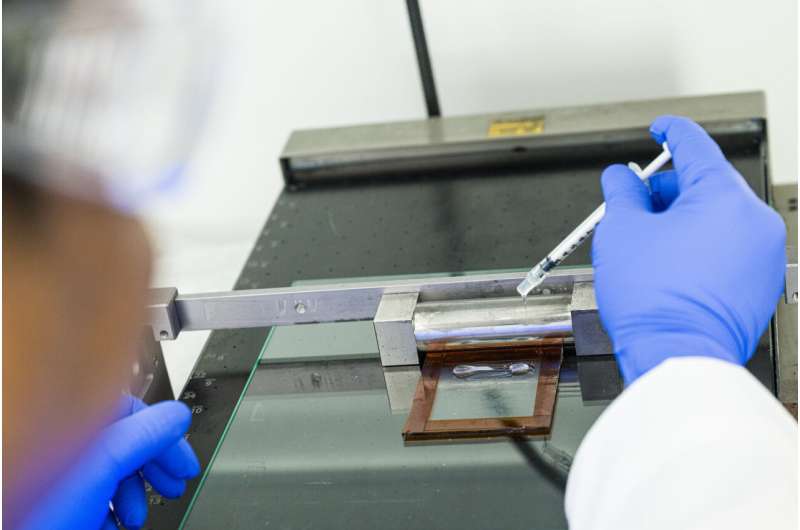This article has been reviewed according to Science X's editorial process and policies. Editors have highlighted the following attributes while ensuring the content's credibility:
fact-checked
peer-reviewed publication
trusted source
proofread
Thermochromic material could make indoor temperature control more energy-efficient

Rice University researchers have developed a smart material that adjusts its transparency with changes in temperature, outperforming similar materials in terms of durability, transparency and responsiveness. The new polymer blend could significantly enhance energy efficiency for indoor space cooling, according to a new study published in Joule.
Cooling off can be a matter of life or death, but air conditioning—when and if available—already accounts for 7% of the world's energy use and 3% of carbon emissions. With temperatures hitting record highs and heat waves growing more frequent worldwide, the need for more efficient ways to keep indoor temperatures in check has also grown more urgent.
One way to mitigate the issue involves coating windows with materials that keep heat out while still allowing light to pass through. One such class of materials is thermochromics, yet existing varieties are still too expensive and short-lived to make a feasible choice for use in buildings, vehicles and wherever else needed.
The new salted polymer blend system developed by Rice engineers in the Nanomaterials Laboratory led by Pulickel Ajayan overcomes these challenges, potentially enabling the large-scale deployment of thermochromics as an energy-efficient indoor space cooling technology.
"Imagine a window that becomes less transparent as the day gets warmer, keeping interiors cool without consuming energy," said Sreehari Saju, a materials science and nanoengineering doctoral student at Rice who is a co-lead author on the study. "Our formulation leverages both organic and inorganic components to overcome the limitations of existing thermochromic materials such as short lifespans and high costs.
"Moreover, this material's thermic response is well-matched to real-world environmental demands. We think that smart windows made from this material could significantly reduce energy consumption in buildings, making a tangible impact on both energy costs and carbon footprint."
The researchers combined experimental methods with computational simulations to understand the material's behavior under different environmental and architectural settings. For instance, they assessed how the material would perform in specific urban areas around the world to get a sense of its potential impact when deployed at scale.
"Our approach was unique because it required a precise balance of materials and techniques that had not been previously explored in this combination, offering a new pathway for developing smart materials," said Anand Puthirath, a research scientist in the Ajayan research group and co-lead author on the study. "We conducted comprehensive experiments to characterize the properties of the material, as well as environmental stability and durability testing, showing that our blend can outperform existing thermochromics."

The researchers synthesized the material by mixing two polymers with a type of salt and worked on optimizing the composition to achieve smooth transitions between transparent and opaque states with temperature fluctuations. Their findings show that the new thermochromic blend is not only highly effective in regulating solar radiation but also remarkably durable with an estimated lifespan of 60 years.
"These research findings set new benchmarks in thermochromics' durability and performance and particularly in a simple practically viable system," said Ajayan, the corresponding author on the study and Rice's Benjamin M. and Mary Greenwood Anderson Professor of Engineering and professor and department chair of materials science and nanoengineering.
"Our work addresses a critical challenge in sustainable architecture, offering a practical and scalable solution for enhancing energy efficiency in buildings."
The thermochromic behavior of the material was studied in collaboration with Professor Yi Long and her doctoral student, Shancheng Wang, from the Department of Electronic Engineering at the Chinese University of Hong Kong, Sha Tin.
More information: Sreehari K. Saju et al, Thermochromic polymer blends, Joule (2024). DOI: 10.1016/j.joule.2024.07.020















